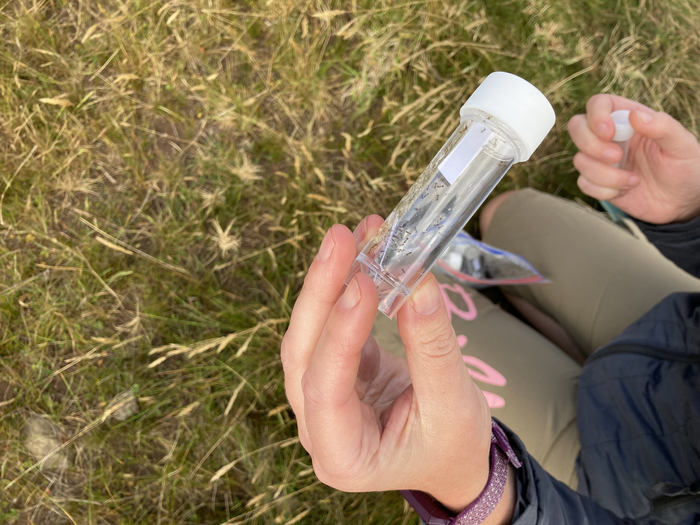A new study has for the first time predicted which invasive species could pose a future threat to the UK’s ecologically unique Overseas Territories.

Credit: UK Centre for Ecology & Hydrology
A new study has for the first time predicted which invasive species could pose a future threat to the UK’s ecologically unique Overseas Territories.
The 14 Territories – many of them small, remote islands such as St Helena and Pitcairn – are home to species found nowhere else in the world. This makes them extremely vulnerable to biological invasions – in the oceans or on land – which could lead to the extinction of these endemic species or irrevocably change their unique ecosystems.
Researchers at the UK Centre for Ecology & Hydrology (UKCEH) and Durham University, working in partnership with communities on the Overseas Territories, assessed thousands of potential invasive non-native species, to predict which are most likely to arrive and impact these environments within the next 10 years.
The resulting research, published in the journal Conservation Letters, provides a reference for authorities, conservation ecologists and the public to guide them in preventing these invasive non-native species from becoming established and causing ecological and economic damage.
UKCEH ecologist Professor Helen Roy, who led the work, says: “These Territories are exceptionally biodiverse. St Helena, for example, has over 400 invertebrates found nowhere else in world – it is simply unique. We hope that this study draws attention to these Overseas Territories and the inspiring people on them who are working so hard to protect their incredible wildlife and habitats.”
To produce the list, experts from each UK Overseas Territory collaborated with the wider project team of experts from around the world to predict which invasive non-native species were likely to arrive, establish and impact on biodiversity, ecosystems, human health and the economy within the next 10 years. The report also examines how the species are most likely to arrive, with shipping containers identified as a key route for many animal species.
Gibraltar and Saint Helena are threatened by biological invasion from the greatest number of species overall. St Helena is most at risk from a high number of plant species, while the Falkland Islands and Tristan da Cunha are threatened by the most marine invasive non-native species.
One of the invasive non-native species that could pose a threat to many of the UK Overseas Territories is the green mussel (Perna viridis). It can ‘hitchhike’ around the world on ships and boats, and form dense colonies in places where it establishes outcompeting other species by, for example, reducing levels of phytoplankton – a key component of aquatic ecosystems.
Other invasive non-native species that present a major threat to many UK Overseas Territories include the little fire ant (Wasmannia auropunctata), the brown rat (Rattus norvegicus), and the mesquite tree (Prosopis juliflora) .
Dr Wayne Dawson of Durham University said: ““The knowledge and experience of local experts was central to identifying the non-native species that pose the highest threats to each Territory, and it was a great privilege to work with a wide range of contributors on the project.”
Ecologists and other experts on the UK Overseas Territories are aware of the challenges of invasive non-native species and in many cases have robust biosecurity measures in place, but Professor Roy hopes that the report will draw attention to their vital work.
Professor Roy added: “Preventing the introduction of invasive non-native species is key, because management of species that have established and spread is often extremely expensive and in some cases there are no options available. We hope that this list will help inform action, including supporting biosecurity activities, to safeguard the wildlife in these precious places.”
-ENDS –
Notes for Editors
- The paper, ‘Horizon scanning for potential invasive non-native species across the United Kingdom Overseas Territories’ is published in Conservation Letters, a journal of the Society for Conservation Biology.
- The UK’s 14 Overseas Territories are: Anguilla, Bermuda, British Antarctic Territory, the British Virgin Islands, the Cayman Islands, Montserrat, Turks & Caicos Islands, Ascension, St Helena and Tristan da Cunha, Falkland Islands, South Georgia and the South Sandwich Islands, British Indian Ocean Territory, Pitcairn and Gibraltar.
- A total of 147 experts from 52 organizations were involved during the study, which was funded by the UK Government and led by the Non-native species Secretariat and by the UK Centre for Ecology and Hydrology. For more information see this link
- Research took place over 14 months and involved site visits, video calls and workshops with participants. Totals of 74 terrestrial invertebrate, 46 vertebrate, 71 plant, and 40 marine species were included on the high-risk lists.
- An earlier output of the same study focused on the British Antarctic Territory.
- Funding: We are grateful to the U.K. Government, and the Foreign, Commonwealth and Development Office Conflict, Security and Stabilisation Fund, and the GB Non-Native Species Secretariat (GB NNSS) for the opportunity to undertake this research.
Images
Dropbox link
About the UK Centre for Ecology & Hydrology
The UK Centre for Ecology & Hydrology (UKCEH) is a centre for excellence in environmental science across water, land and air. Our 600+ scientists work to understand the environment, how it sustains life and the human impact on it – so that together, people and nature can prosper. We have a long history of investigating, monitoring and modelling environmental change, and our science makes a positive difference in the world.
Journal
Conservation Letters
DOI
10.1111/conl.12928
Article Title
Horizon scanning for potential invasive non-native species across the United Kingdom Overseas Territories




